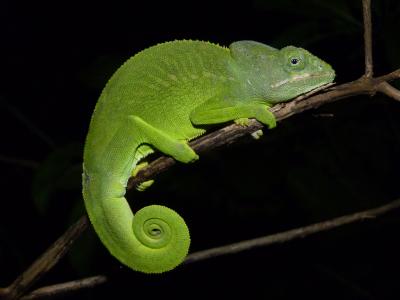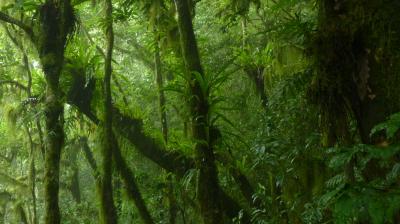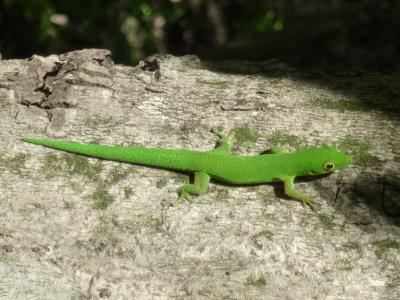
Satellite Survey Sheds Light on Species' Extinction Risk

Animals in a range of habitats around the world are threatened by development and other human influences, but those that dwell on small islands are particularly vulnerable, given the small space available to them.
However, there is often little concrete data to assess these threats, which is why a group of scientists used satellites and on-the-ground surveys to better establish the threats to reptiles and amphibians on an archipelago in the Indian Ocean.
A typical problem in species conservation efforts, particularly in tropical regions, is the lack of information on the extent of suitable habitat available for threatened species. This has certainly been the case on the volcanic Comoro archipelago in the Western Indian Ocean, where many reptile species have already become extinct, researchers say.
"The analysis of satellite images allows us to precisely estimate the remaining extent of rainforest and other natural habitats," said study team member Oliver Hawlitschek from the Bavarian State Collection of Zoology. This approach has rarely been used in species conservation, and this is the first time it has been applied to all species of a particular group in an entire country.
Satellite survey
The team used satellite data from the Landsat series of satellites in classifying different types of habitats on the islands, as well as elevation, as some species on the islands only dwell at highland sites.
In addition to their satellite-imagery analyses, the researchers conducted intensive field surveys on the islands to see what kinds of habitats the Comoro reptiles tended to gravitate to.
Sign up for the Live Science daily newsletter now
Get the world’s most fascinating discoveries delivered straight to your inbox.
They found that natural, undisturbed habitat wasn't critical to the survival of all species, but the ones that needed it were most-endangered.

"We found that only 9 percent of the island area is still covered by natural forest, but many native species have adapted to habitats under human influence like orchards, plantations, and gardens," Hawlitschek said. "Those species which are dependent on the remaining natural habitats are the ones most threatened by extinction." [8 Most Endangered Places]
The study found that invasive species were one of the main risks for many at-risk native species. They recommend "Endangered" status for three species and "Critically Endangered" status for one species, based on the criteria used by the IUCN Red List, an inventory of the conservation status of species all over the world.
Setting priorities
The researchers chose the Comoros as a case study for their methodology because, in relation to large islands like neighboring Madagascar or continental regions, these islands cover little area and are inhabited by a limited number of species. But the researchers hope to expand their work to other, larger areas where more species are at risk.
The researchers and their collaborators are hoping to use the data from their study, published recently in the open access journal, ZooKeys, to better inform conservation work and set conservation priorities in the Comoros and elsewhere.

"Natural habitats are destroyed at a fast pace in many regions of the world," said Frank Glaw, herpetologist at the Bavarian State Collection of Zoology. "We therefore need tools to assess quickly and objectively where we have to set our priorities in species conservation, especially for species endemic to small islands which are particularly vulnerable to extinction."










